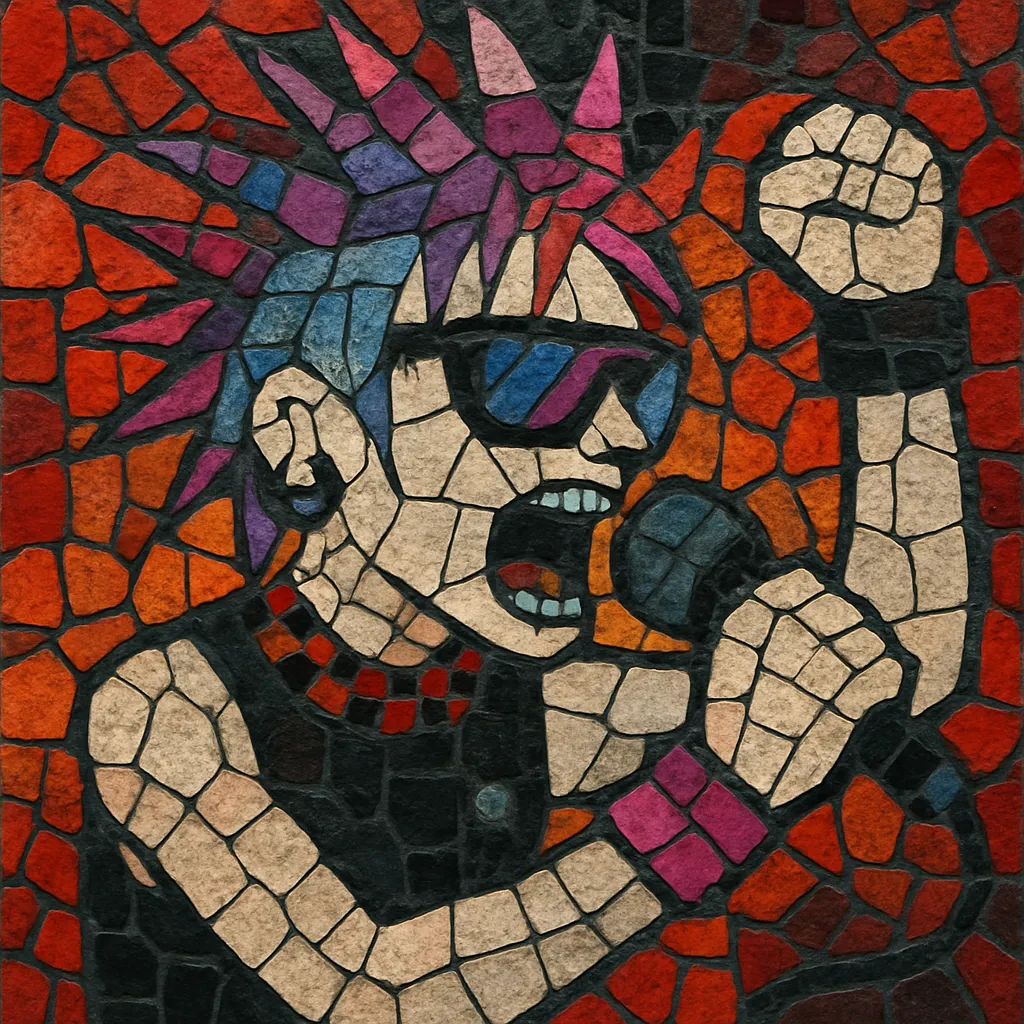
Crunkcore (often called "scrunk") is a high-energy fusion of Southern crunk hip hop, scene-era emo/screamo vocals, and glossy, Auto-Tune–heavy dance-pop production. It is defined by loud 808s, ravey synth leads, chant-like hooks, and the juxtaposition of rapped party verses with screamed or growled interjections.
The genre’s aesthetic is inseparable from late-2000s MySpace culture: neon visuals, tongue-in-cheek hedonism, and deliberately excessive vocal processing. Lyrically, it leans into parties, alcohol, sex, and irreverent humor, favoring immediacy and shock value over introspection. Its sound is intentionally brash and over-compressed, engineered for instant impact rather than subtlety.
Crunkcore emerged in the United States during the late 2000s at the height of MySpace culture. Artists began fusing the rowdy, chant-driven energy of Southern crunk with screamed vocals taken from screamo/post-hardcore and the synthetic sheen of electropop and club-oriented dance music. Early tracks circulated virally online, leveraging DIY production tools and social platforms rather than traditional label pipelines.
Brokencyde’s singles and videos became lightning rods for attention in 2008–2009, while acts like Millionaires, 3OH!3, Dot Dot Curve :), Blood on the Dance Floor, and Breathe Carolina brought the sound to Warped Tour stages and youth-oriented club circuits. Media coverage was widespread and frequently hostile, criticizing lyrical crudeness, abrasive production, and perceived novelty. That notoriety, however, amplified the scene’s visibility and cemented crunkcore’s place in late-2000s youth culture.
As EDM, dubstep, and mainstream electropop surged, several crunkcore-associated acts shifted toward cleaner dance-pop or electronic rock, while others dissolved. The sound’s presence on charts faded, but its hybrid logic—screamed vocals over hip hop beats, hyper-synthetic textures, maximal Auto-Tune—prefigured later cross-genre experiments.
Crunkcore’s blend of hip hop bravado, emo/screamo affect, and internet-native aesthetics foreshadowed the genre-blurring ethos of 2010s–2020s online music scenes. Elements of its attitude and sound can be heard in neon pop punk revivals, parts of emo rap and punk rap, strands of trap metal, and the irreverent, digitally saturated worlds of hyperpop and digicore.

